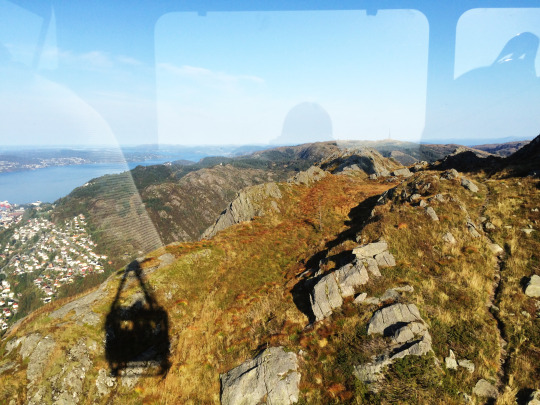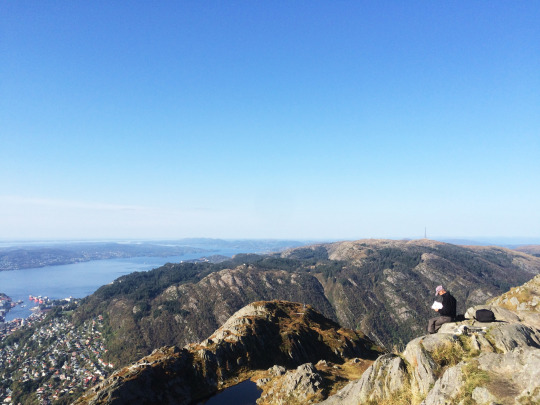Text
Museum Series: SFMOMA
ARCHITECTURE AND LIGHTING

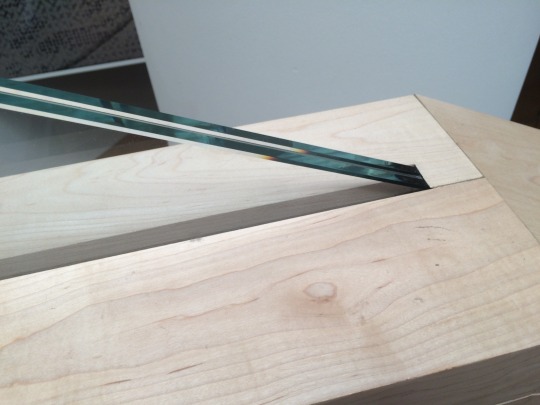

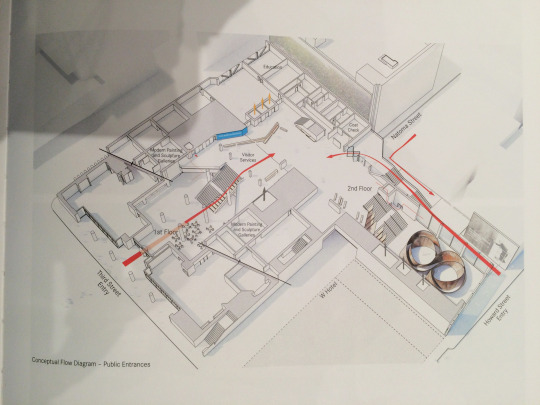
Image from SFMOMA book at museum store.

Image from SFMOMA book at museum store.
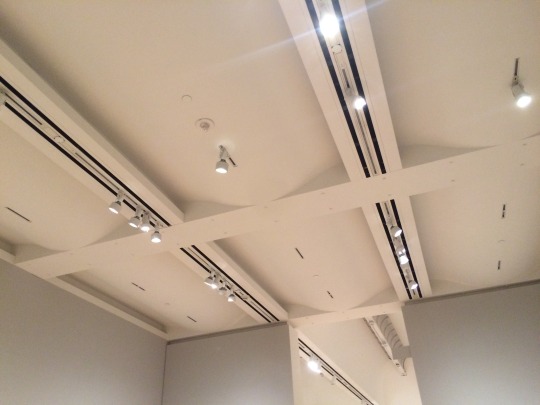

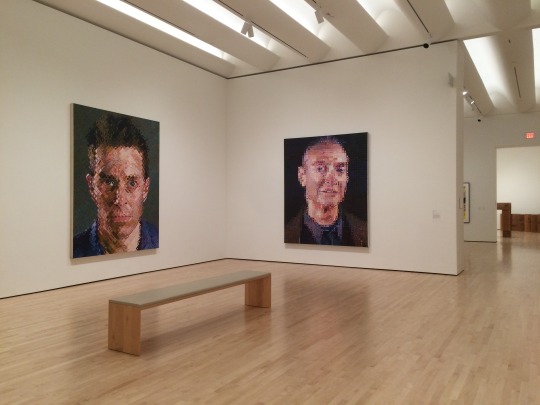
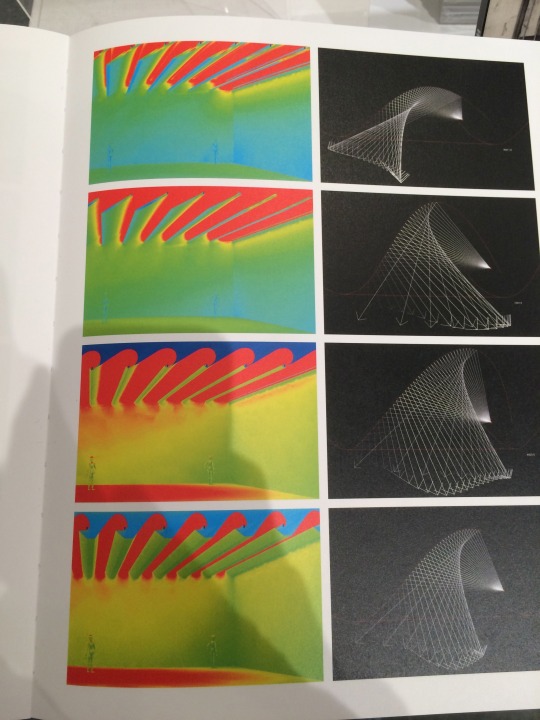
Image taken from SFMOMA book at museum store.
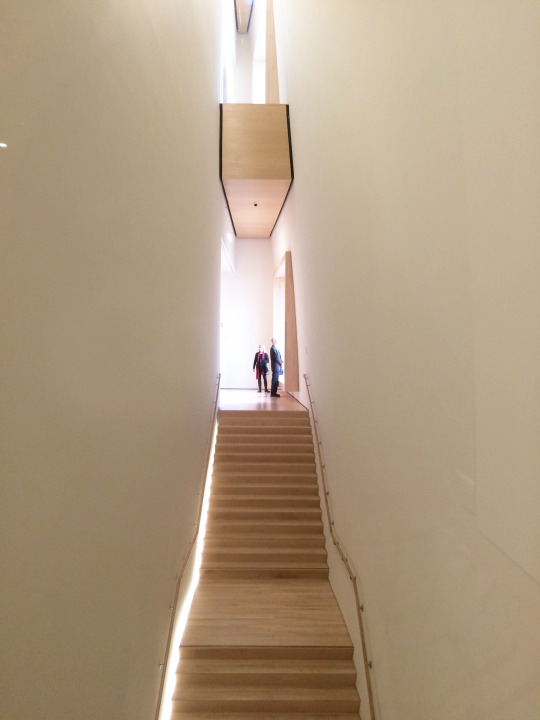
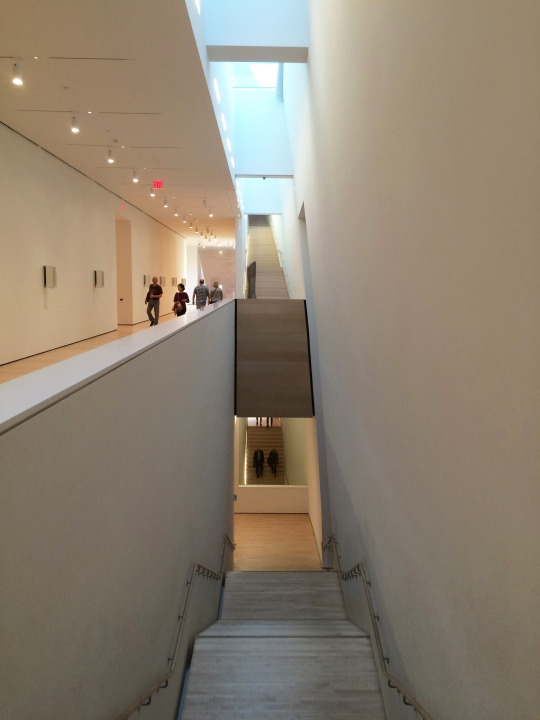
ART

Part of the artwork is connected to a plug that is a facility of the museum. Where does the artwork start and where does the artwork end? Did the artist deliberately leave the plug so plainly in sight, rather than hiding it somewhere out of view?


This work is titled Twenty-Three Found “Lost Bird” Posters by Rigo 23, an American artist.
He said on the blurb that “I was really stricken when I saw a lost bird flyer [for the first time]. So I picked it up because I thought it was so unique. [But] then I saw another one and another one, and I started collecting them. . . . I found it very romantic, like incredibly optimistic that they will find the bird. . . . I also thought it was an interesting way to describe the city because usually people will write in the flyers the place where the bird took off. So it’s kind of . . . a portal to the city through these moments where interspecies relationships went haywire.”
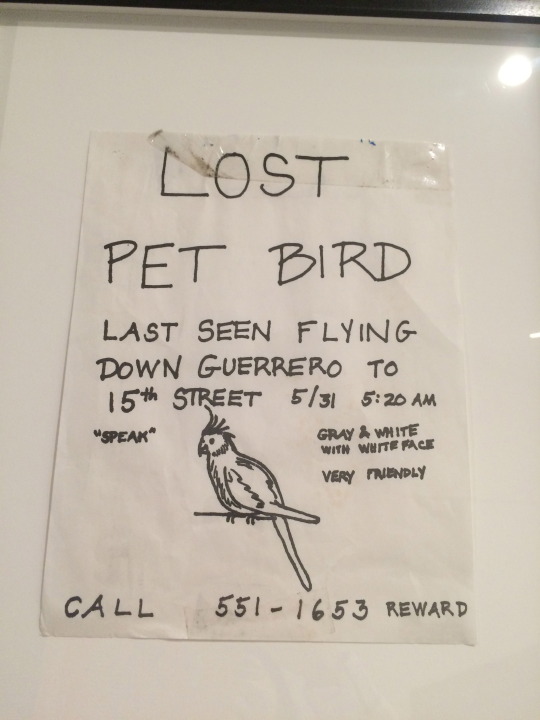
POINTS OF INTEREST

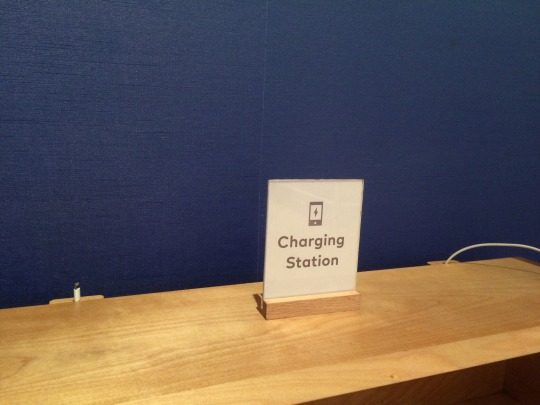
#sfmoma#contemporary art#modern art#american art#san francisco#architecture#lighting#rigo 23#richard serra#museumseries
0 notes
Text
Museum Series: de Young Museum
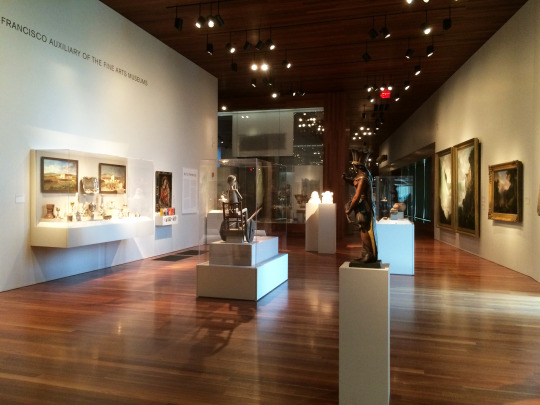


A contemporary building by Herzog & de Meuron, but inside the American Art galleries the walls and flooring are more traditional and classical than contemporary. The dark woods on the floors and ceilings seem to elevate the status of the works, creating this very elegant, tasteful feel throughout the galleries. Dark colored walls are also used in certain galleries, like deep turquoise and blue. Probably because the works here are from a much earlier time than the later and more well-known American Pop art, and still have a lot of influence from traditional European art. Also the skylight in the middle of the room is a lot like the galleries at the Louvre.

And I saw many of these drawers and furniture that we learnt about from Patrick’s history classes.
Some of my favorite paintings, all from the American Art galleries:

The Niagara River at the Cataract by Gustav Grunewald, 1832.

Detail of two men standing near the bottom left of the painting.

A River Landscape by Asher B. Durand, 1858.

Scene in the Arctic by William Bradford, ca. 1880.

Oranges in Tissue Paper by William J. McCloskey, ca. 1890.
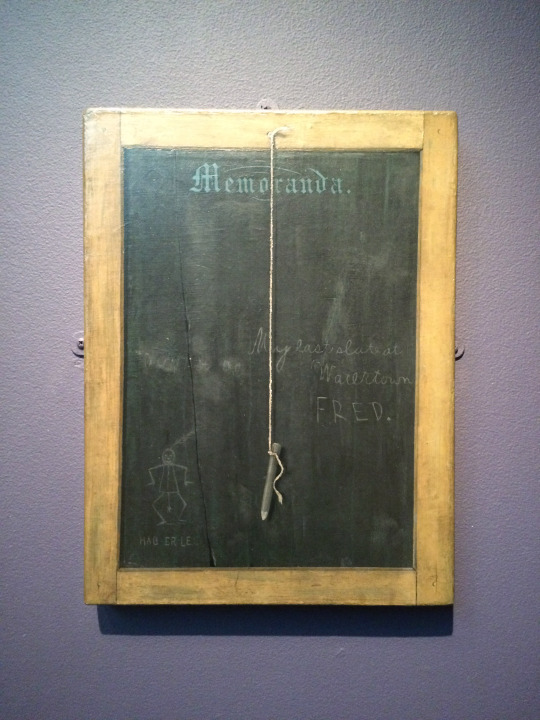
The two themes that I really like from American Art are trompe l’oeil paintings and landscape paintings, especially those from the Hudson River School. Yes, I realize that from my museum visits I tend to be particularly fond of landscape paintings, like the Bridal Procession on the Hardangerfjord. Maybe if I do one day get into art history as a profession I will take up landscape paintings as my area of specialization. You just cannot get tired of scrutinizing how reflective and clear the waters are in these paintings!
0 notes
Photo


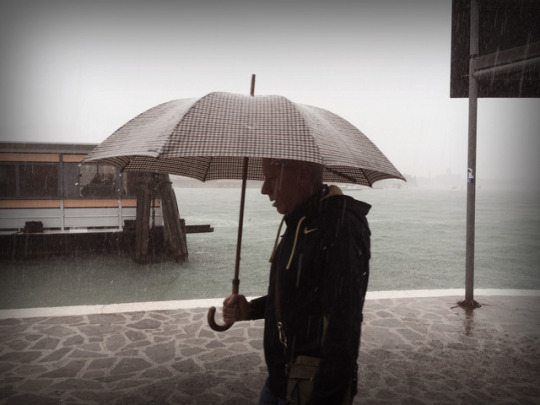
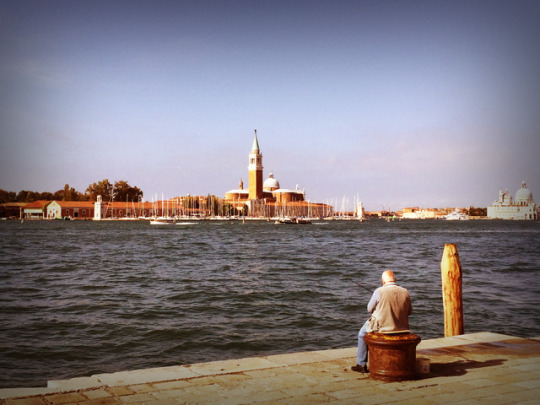
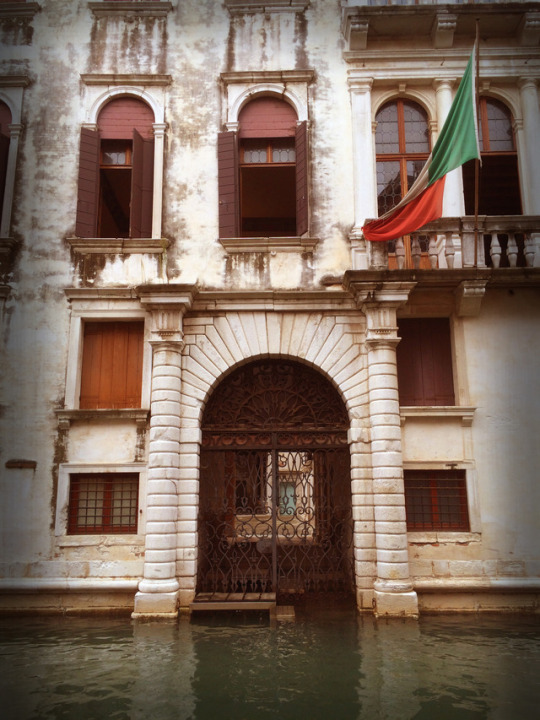
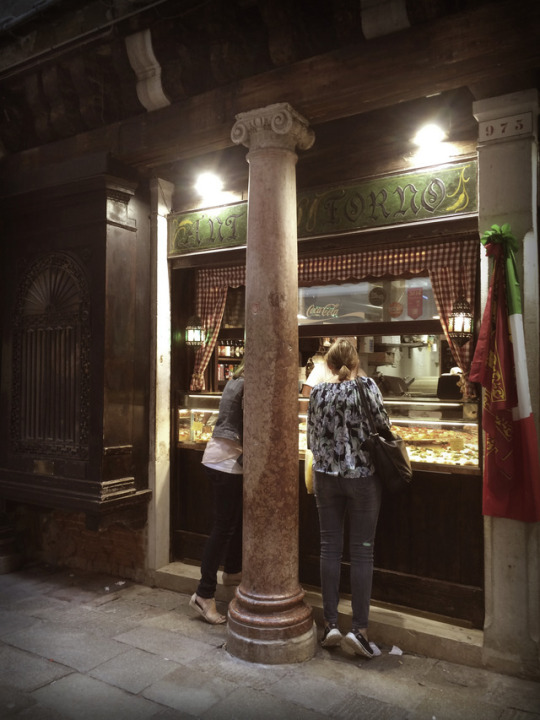
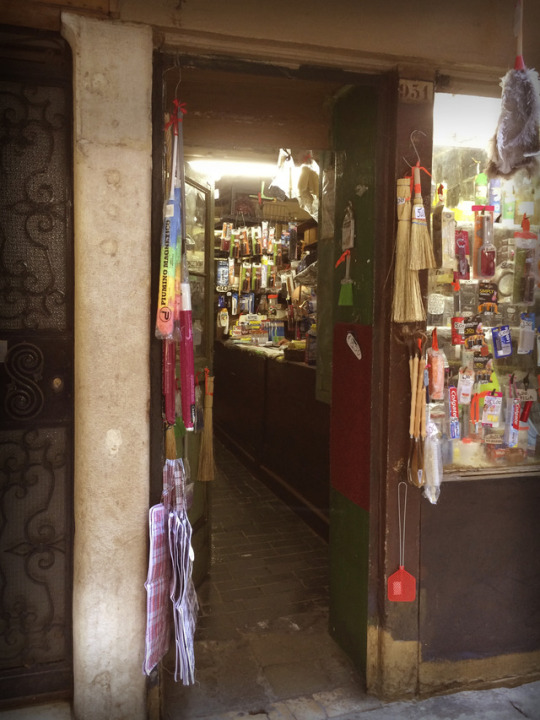
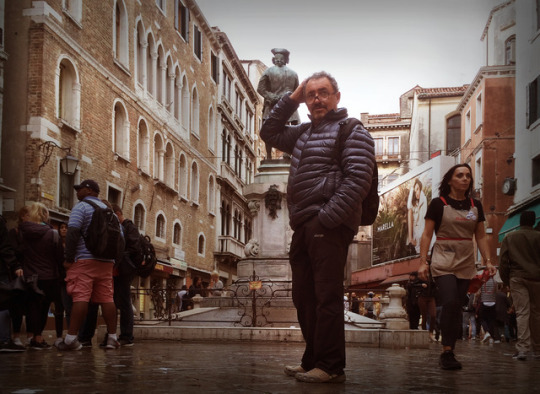

Venice: A Photo Essay
0 notes
Text
The time I flew 12 different airlines in 4 months
It had not occurred to me until the past few weeks that besides having seen a great handful of art museums on my travel semester, I have also flown a great handful of different airlines. And I realized that this itself could be a great takeaway from my travels, so I compiled a list here.

I honestly don’t think I will be breaking this record anytime soon. And gosh, I’ve spent more than five days just on planes! That doesn’t even include traveling to and from the airport and waiting time at the airport. I’ve really spent a great deal of time on traveling alone. Making it literally a travel semester hahaha.
0 notes
Text
Museum Series: The Louvre

For a post on such a worldly museum, I contemplated just showing pictures (not that I have many good ones), since no amount of words can possibly express the fascination and awe that took place here. But seeing as it was my second time here, and I should probably delve deeper for the sake of my research and capstone, I decided to narrow my scope and focus on a few specific topics instead.
The museum has a long history but is not alone in the tradition of royal-palace-turned-art-museum museum typology. This is because Kings, Emperors and the royalty in general were the main patrons of fine art like painting and sculpture, and so they accumulated a great number of works by the best artists in the nation. For the Louvre, it was King Francis I who started the collection that millions of tourists will come from all over the world to see almost 500 years later. However, the royal art collection was private and not open to the public until 1793, when the French revolutionary government created the first national art museum for the public in the spirit of the Enlightenment. And that museum was called Musée Central des Arts, situated in the Grande Galerie of the Louvre.
Today, apart from being housed in the exquisite, monumental royal palace, the museum also reveals its long history through its symmetrical and enfiladed layouts - something unique to traditional museums.

Projet d'aménagement de la Grande Galerie du Louvre
This is a painting that I came across in my research on museums last semester. It’s by a French artist called Hubert Robert, and in the same gallery, are his other paintings of the ancient ruins in Italy and France.
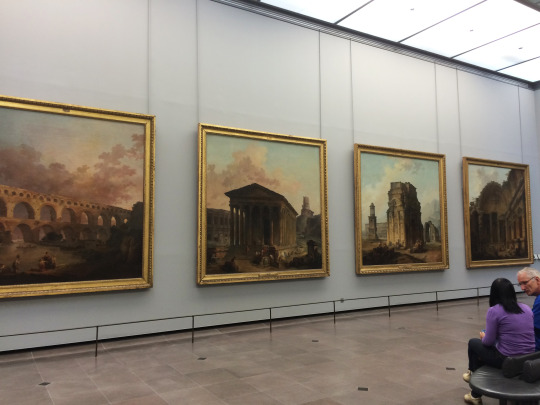
I only came to know about paintings of ancient ruins when we were having Patrick’s history of interior design classes. The paintings and drawings were made popular by tourists on the Grand Tour, who wanted a souvenir to take home from their trip. And somehow, since then, I myself started to become fascinated with those romanticized portrayals of the ancient architecture. And this trip to Europe, which has let me see some of those great architecture for the first time in real life, made me more appreciative of both the structures themselves as well as depictions of them. Throughout my time in Rome and Venice, I tried to look for a postcard with the drawings of Panini and other artists depicting such ancient ruins, but was deeply disappointed when I didn’t find any on the entire trip. So seeing these paintings sort of made up for that, except I still didn’t get any of them in postcard format.

Ancient Rome, by Giovanni Paolo Panini, 1757.

Modern Rome, by the same artist done in the same year.

The Embarkation for Cythera. I only learned after returning from Paris, that this is Monet’s favorite painting in all of the Louvre. Good thing I took a photo of it then, haha!
I spotted a brilliant gallery directory. Apart from just showing the wings, plan and circulation, these models also have miniature models of famous artworks in the corresponding galleries.
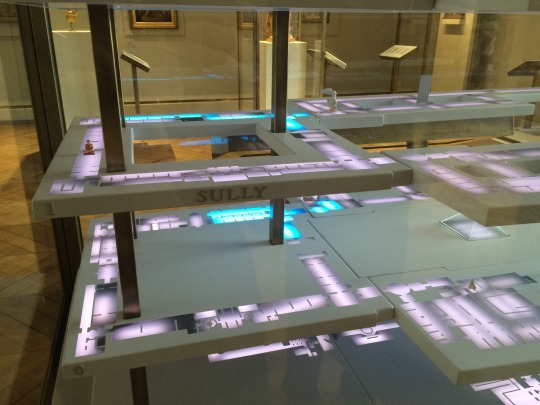
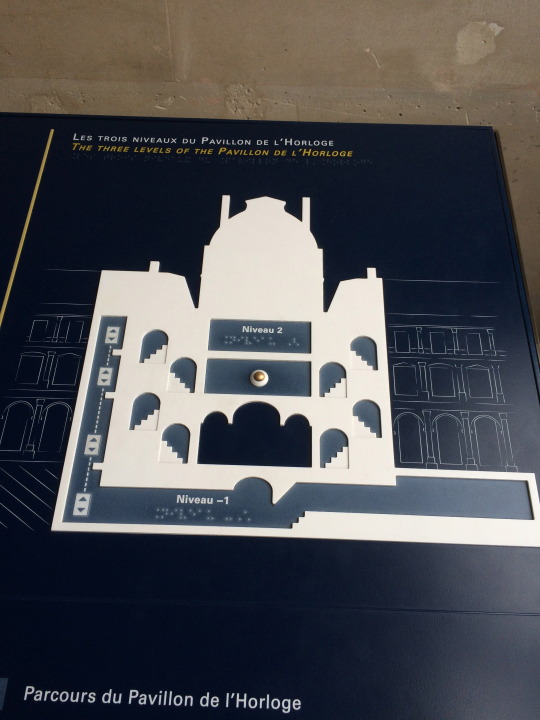
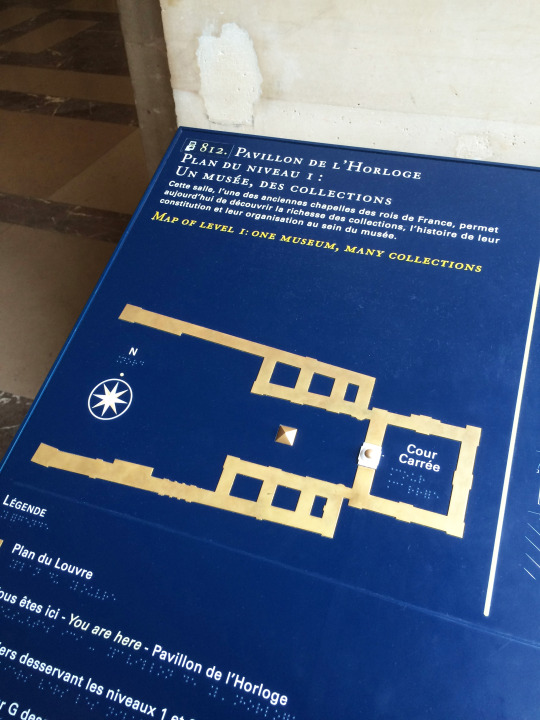
Besides the art, even the wayfinding signs are so world-class at the Louvre. The white and golden shapes of the museum are slightly elevated, and uses such a great combination of visuals and touch to cater to the visitors. This is something I should definitely apply in my capstone.
And of course, no visit to the Louvre (nor blog post on the Louvre) will be complete without a photo of the gazillions of people trying to take a selfie with Mona Lisa so here it is. Yes, I know, I know.

0 notes
Text
Museum Series: Centre Pompidou
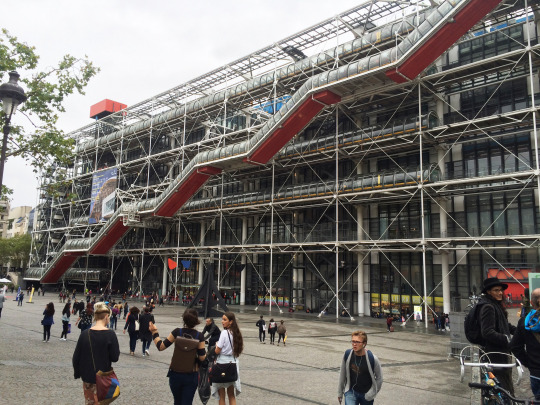


Just as I got excited seeing One and Three Chairs (for the first time in real life?), that was also when my dad suddenly proclaimed that all contemporary art are simply bullshit. Luckily, because so many people have already said the same thing to me, I have developed a reflex by then. I tried to enlighten my parents on the meaning behind One and Three Chairs, and how it has a profound influence in the art world. But as usual, none of that mattered to them; they have already made up their minds.
But what happened next was much more worrying. As I continued looking at the rest of the gallery, a veil of doubt started to slowly descend upon my “enlightened” disposition. In all honesty, some of the works were really, as my parents had put it, minimal effort and if there were any deep meaning behind the work, the artist or the museum certainly made no effort to convey them to the confused audience. Perhaps my parents were right, contemporary art DOES seem to be a load of bullshit. And for a second, I myself almost decided that I am done with museums and contemporary art, for what they seem to (bother to) offer are becoming increasingly disappointing. At that moment, the huge graphic that was out in the square seemed to really resonate:

I could only say, moi, je ne sais plus. For the first time I felt that my belief in art had been shaken. These are just two of the “minimal effort” works we saw in the gallery. (Perhaps one day, effort minimal could become the name of an art movement, since art movement names tend to come from disappointed critics and audiences.)
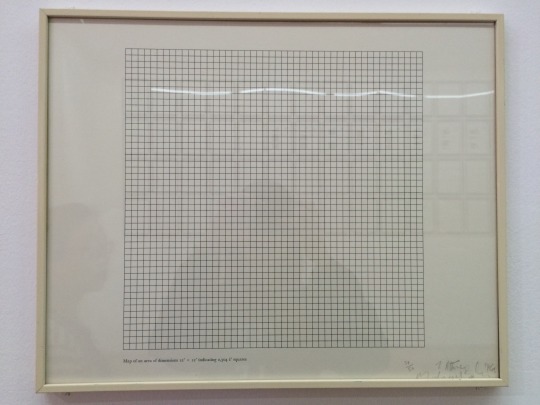
Map of an area 12″ x 12″ indicating 2,304 1/4″
(yes, that’s the name of the artwork and no, this in the the brackets is not.)

Qui a planté ce clou? Je ne sais pas
Well, je ne sais pas non plus. So I moved on to some of the more comforting Cubist paintings


and Duchamps.
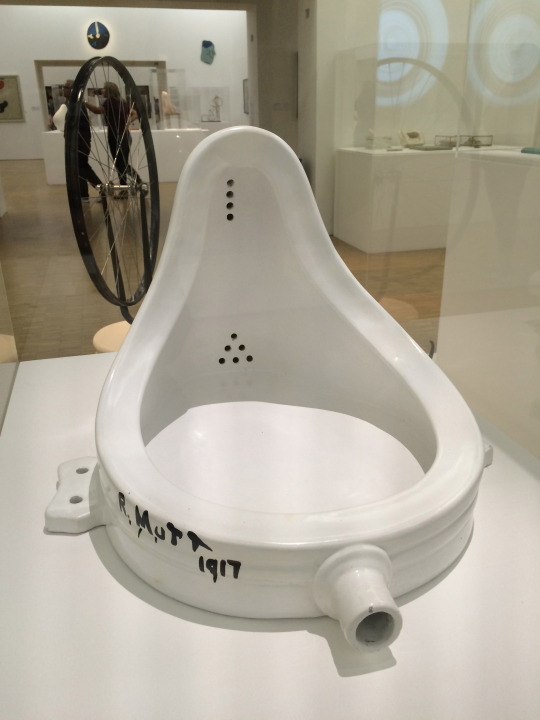
I was excited to see the Fountain, because it was the first time in a long while I’ve seen it. But the fact that the original Fountain has long been destroyed and more importantly, the fact that Fountain is not an art to be seen, but understood, made not much of a difference seeing it in real life. Also, I did not know this then but I will in fact be seeing at least three Fountains in three separate museums in my travels. I shall make a post about this later.
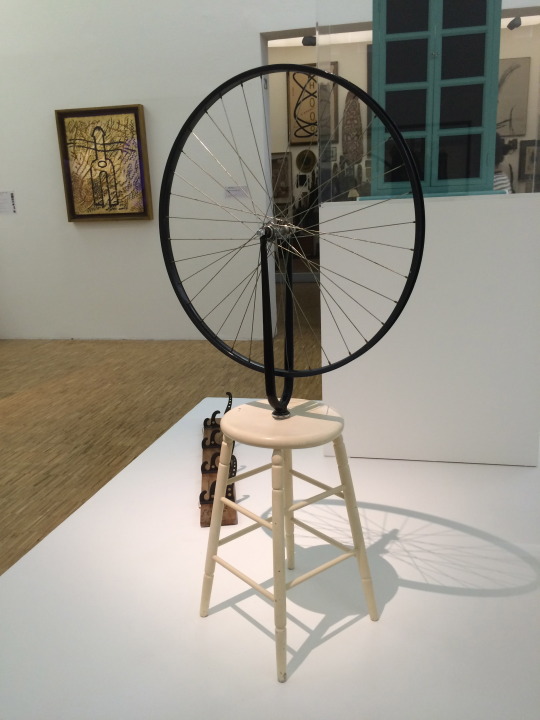


0 notes
Text
Museum Series: Musée d’Orsay

The Orsay museum has a more traditional architecture and interior design. So it adopts the old-school dark colored walls for displaying paintings.

For some reason I feel like purple walls go well with highly controversial works.
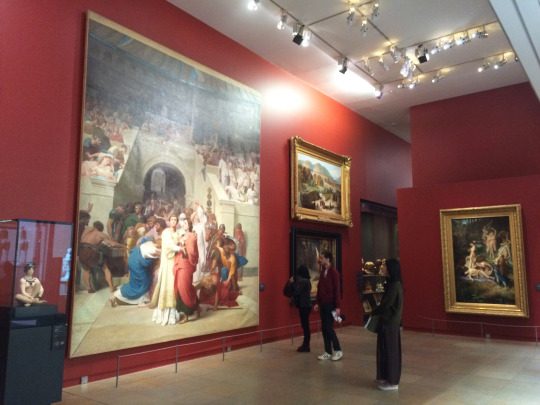
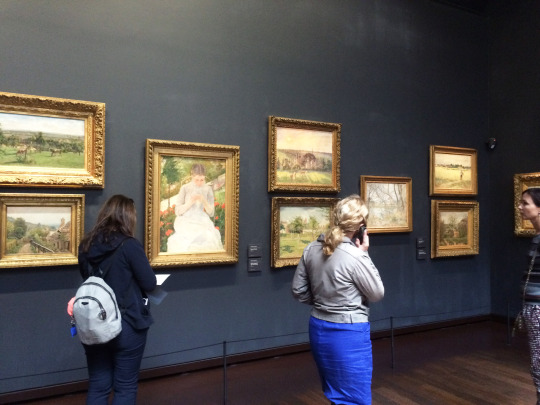
And dark blue walls for the “Galerie des Impressionnistes”. The Orsay museum is probably most well-known for its collection of Impressionist and Post-impressionist paintings, as many of the movements’ artists were French and practising around Paris at the time. Even though I’ve been here before on a school trip, it was still exciting to see the works that we kind of grew up with in our secondary school art history classes, which for some reason never managed much to move past Post-impressionism.



This is the same painting that was delivered to an Impressionist exhibition at the National Gallery of Singapore. It exhibits the use of white and mastery over depiction of snow as well as the bluish shadows, all typical of Impressionist practices.
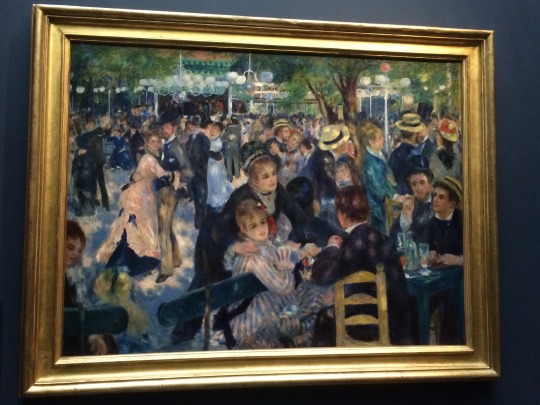

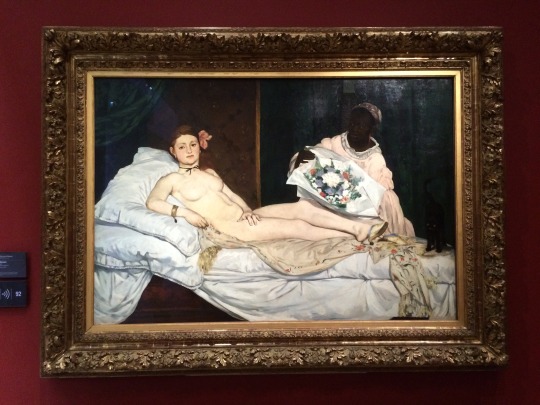
Olympia is a painting I would never forget, because we had it for our first art history exam in secondary school and everyone was discussing what kind of reaction their parents would have when they sign our papers and see this is what we have been learning in art history classes. But apart from that, this painting is important in art history because of the direct female gaze. Never before did a female nude figure in art history look at its viewers with such direct and honest expression, and it was seen as a highly vulgar painting at the time.
And there were these models with highly intricate interiors, which reminded me of the models we’ll be making for our capstone. Now this has set an entirely new standard for me.

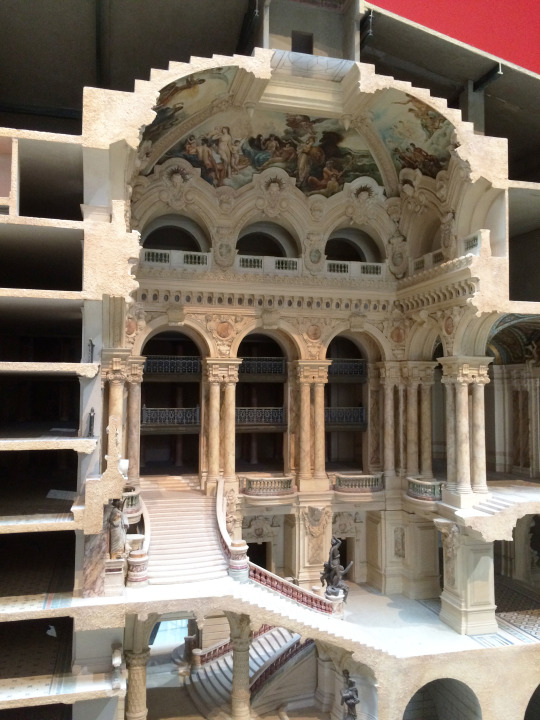
We also saw in online reviews that the restaurant at the Orsay museum is one of the most beautiful places in Paris to have lunch, and so we decided to check it out.
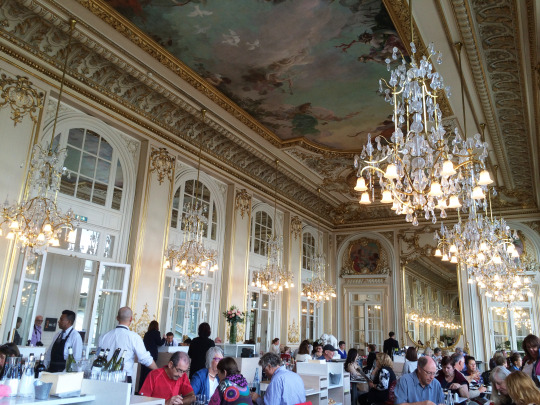
It is actually smaller than it looks, as both the light colored walls and the floor to ceiling windows and mirrors helped to create an airier atmosphere. And the food was certainly as intricate as the interior decorations.
3 notes
·
View notes
Text
Venice Biennale 2017

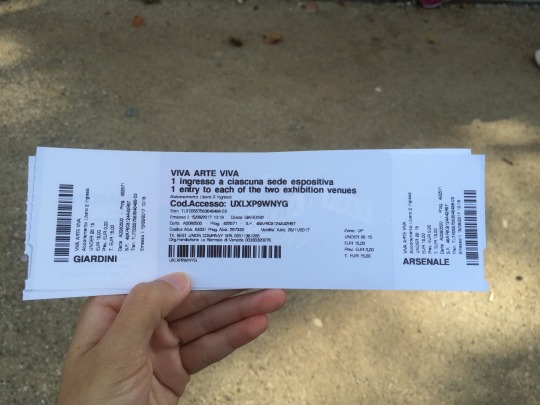
The ticket allows for one entry into each of the two sites at Giardini and Arsenale.
Walking around the area, one thing that struck me was the architecture of the many pavilions, each representing a single country.

United States Pavilion.

France pavilion.

Canada pavilion.

Great Britain pavilion.

Germany pavilion, featuring Faust by artist Anne Imhof. The piece is a performance art, with performers dressed in all black, going through a series of both scripted and spontaneous movements. It’s one of this year’s most popular works and I had read about it when researching on contemporary artists even before coming here. Indeed there was a long queue when I got there, and everyone was as puzzled and slightly uncomfortable as we watched the performers carry out the sequences.
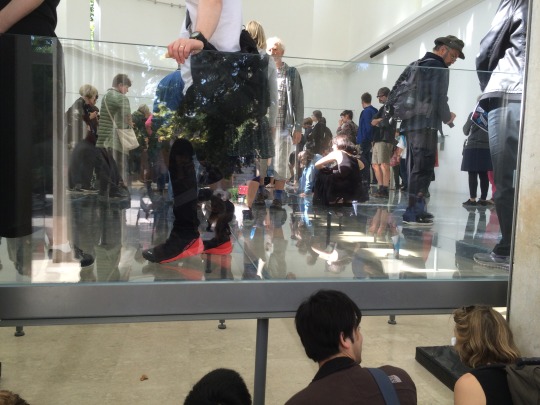

Some have given up queuing and instead settled down outside the building where a window gave a good view to what’s going on both above and below the glass platforms. Here two performers are entangled as they seem to negotiate space individuality. I did a research on this work, and here is what Susanne Pfeffer, curator of the German Pavilion, said of the work:
... our bodies defy objectification even as they are irresistably drawn towards their own commodification. Imhof reveals the space between body and reality, the space where personality comes into being.
She (Imhof) is really reflecting changes in our bodies and her work is so tender on one hand and, on the other hand, often shows a brutalism. I thought it would be interesting for the German Pavilion, which is so brutal itself.
Meanwhile at the Japan pavilion, there was a queue forming for viewing something on a platform. Curious, I joined the queue and waited for a while before realizing the queue is moving very slowly so I gave up waiting and went into the pavilion.
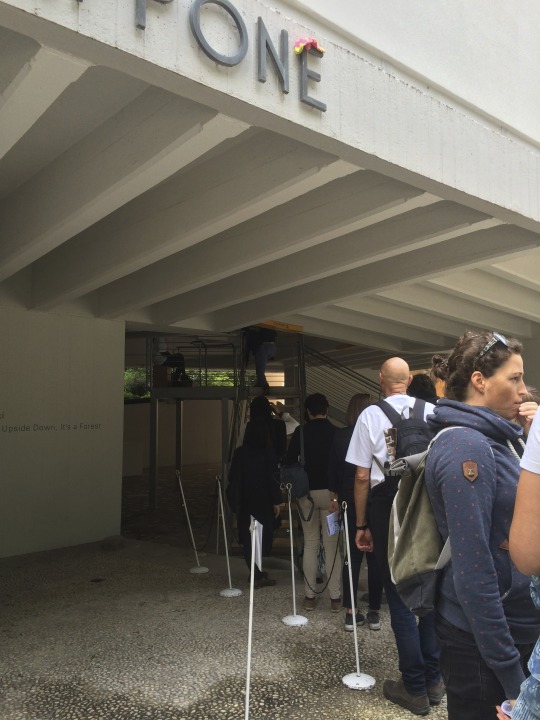
And saw this. This is what the queue was for! A small crowd has gathered around the hole in the floor, which is surrounded by pieces of clothing on the outside and a small 3D silhouette city on the inside. And each time a head pops out from the hole, the crowd gets excited and start taking pictures. But that seemed to rather frighten many of the viewers, as they usually took a quick glance around their surroundings while avoiding eye contact and then quickly retreat back into the hole of anonymity. The title of the entire exhibition is Turned Upside Down, It’s a Forest, and suggests a variety of natural and manmade landscapes that are mirrored or reflected, which by extension refers to the concepts of reality and ambiguity.

0 notes
Photo



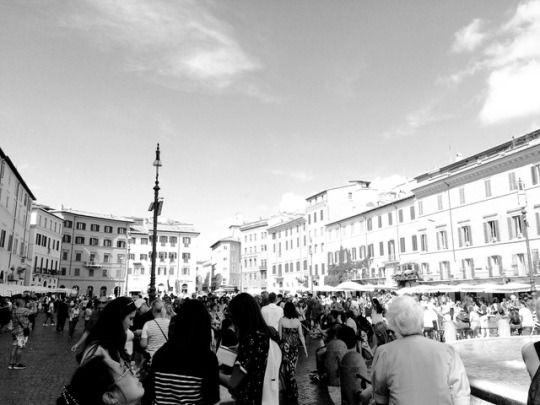
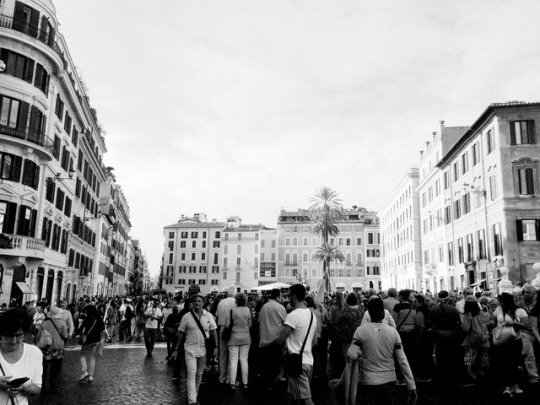

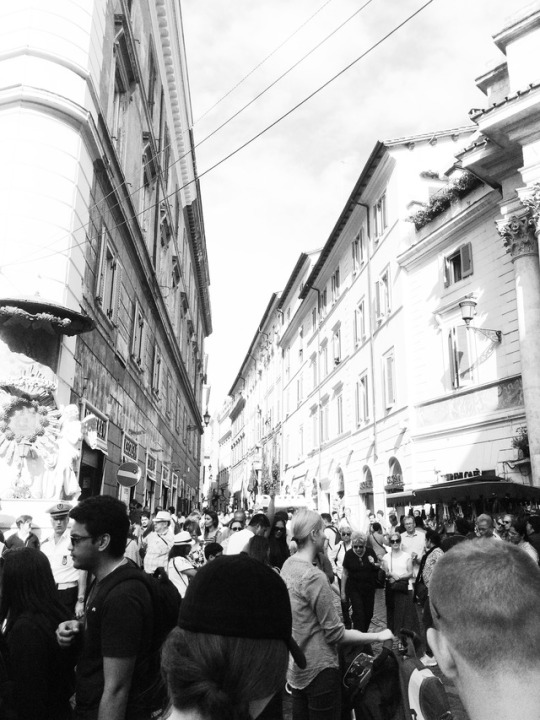
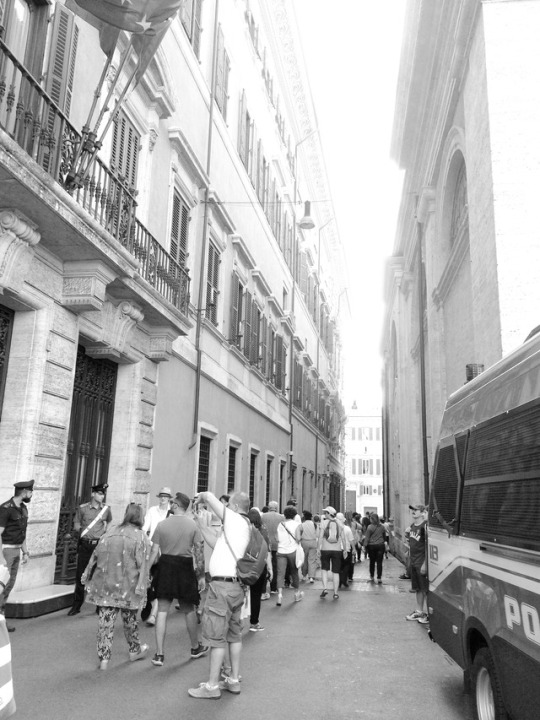
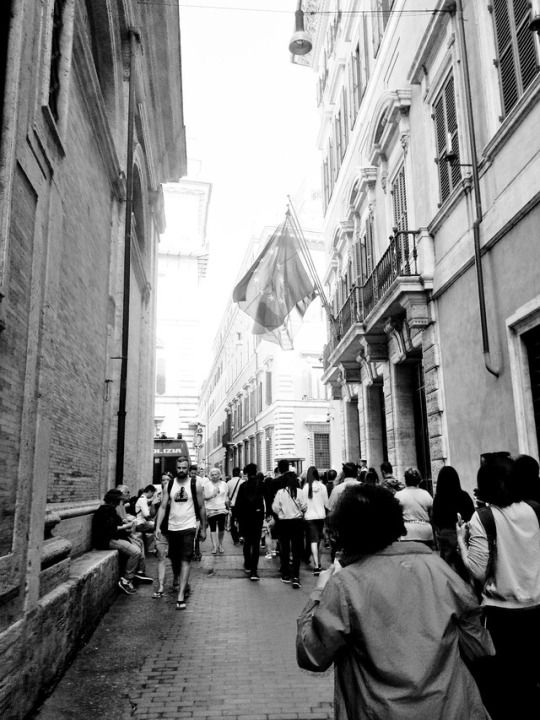

Rome: a walking city
In Rome, at least the old parts of Rome, pedestrians always come first, vehicles second. And I often saw pedestrians sharing roads with vehicles, with the former far outnumbering the latter. Also, I found that as a tourist, we almost never needed maps, because everyone else is going to the same destination so all we had to do was literally go with the flow. And that to me, somehow, felt really festive and captured exactly the spirit of what it means to be a tourist. I really don’t think I’ve enjoyed being a tourist more anywhere else.
It’s also funny when you think about the Grand Tour which was popular since the 1600s, because people are still coming to these places 500 years later with the same anticipation and sense of awe as all those before them. It’s as if nothing has changed. Many of the buildings are still the same, the sceneries are probably mostly the same, many roads are the same, and maybe even the routes that people take today from one destination to another are the same that people took 500 years ago. I find it quite mind-blowing. Traveling to ancient cities such as Rome and Venice really challenges our sense of time, especially now when we live in an era where things never last for more than 24 months. It feels like stepping back in time, and then never stepping back out.
3 notes
·
View notes
Text
Museum Series: The National Gallery in Oslo

Traditional style gallery with two rows of paintings and seating in the center, and large skylight.
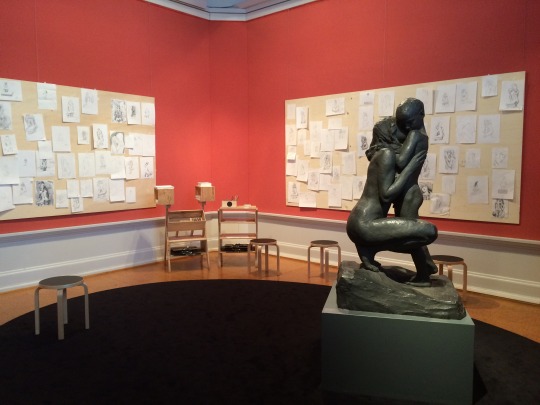
An activity room, where visitors can sketch this sculpture in the foreground and pin up their work. I wonder if they change the sculpture every so often? And if they also display casts of famous sculptures as a way of letting people learn about art history? I think it’s a great way for visitors to get up close to artworks and appreciate them, since drawing and sketching requires a lot of observing and it’s often through drawing something that we realize things we might not have noticed otherwise.
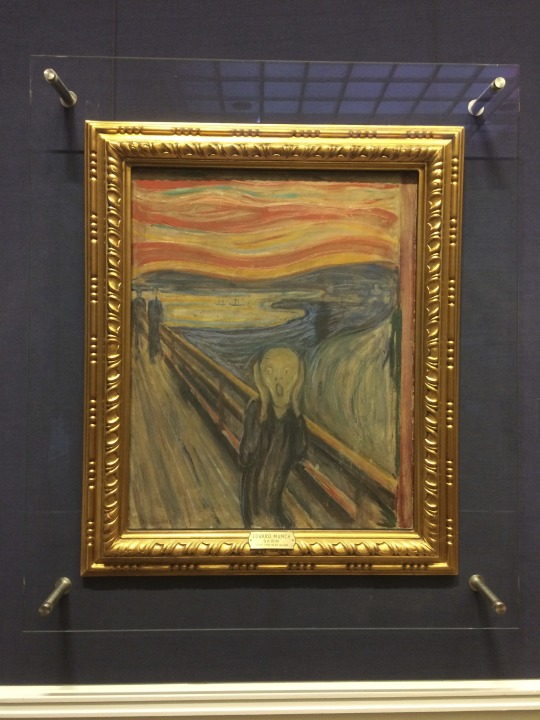
The legendary “The Scream” by Edvard Munch. Only this and a few other paintings were behind what I suppose is bullet-proof glass. I remember the colors are much more muted in reality than I had imagined them to be.

Saw this painting called Bridal Procession on the Hardangerfjord by Adolph Tidemand (who painted the figures) and Hans Gude (who painted the landscape) and instantly fell in love with it. What struck me was the depiction of the landscape, with its iconic Norwegian fjord and its smooth, reflective waters, as well as the way the soft, warm sunlight falls onto each of the figures. Here’s a close-up on the central subject matter which also showcases the representation of the water:
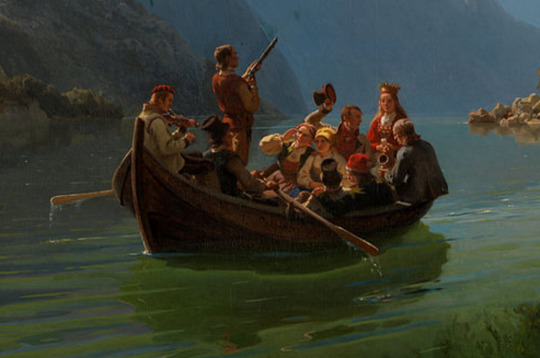
This is from the National Museum’s official website:
This sun-drenched summer painting ... is a typical expression of how the national romantics perceived Norwegian nature and folk life. Artists were instrumental in defining what was distinctly Norwegian after Norway had adopted a constitution of its own in 1814, following centuries of Danish rule. This painting, which so strongly expresses the aesthetic ideals of the nineteenth century, has been revered as an “icon” by generations of Norwegians. It has also been transferred to the stage both as a living tableau and as a ballet, and it has been accompanied by poetry and music.
It’s also an iconic example of the Norwegian Romantic Nationalism art movement, which “emphasized the aesthetics of Norwegian nature and the uniqueness of the Norwegian national identity.” (Quote from wikipedia) This is why the movement resulted in many paintings of landscapes special to Norway, such as the fjords like in this one.
0 notes
Text
Museum Series: Astrup Fearnley Museum of Modern Art
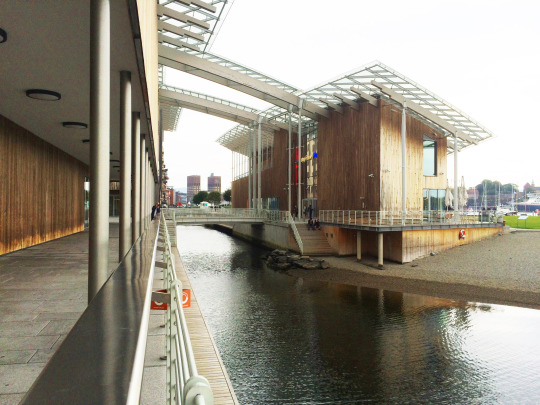
Building designed by Renzo Piano Building Workshop.
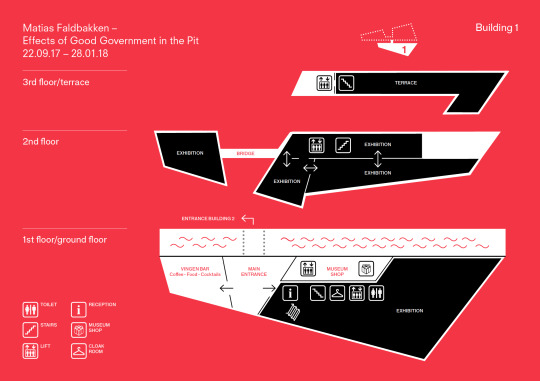
Floor plan guide of the changing exhibitions half of the building.
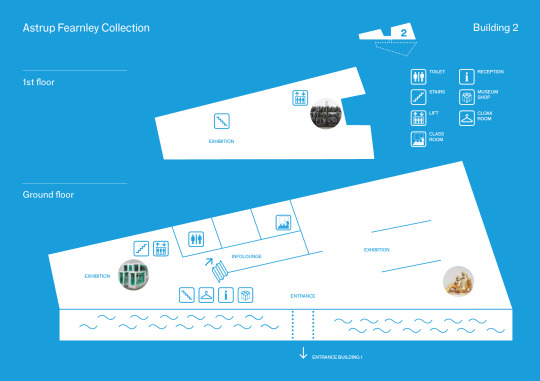
Floor plan guide to the permanent collection half of the building. Really like how they also represented the narrow strip of water that runs between the buildings, since it’s central to the design of the museum.
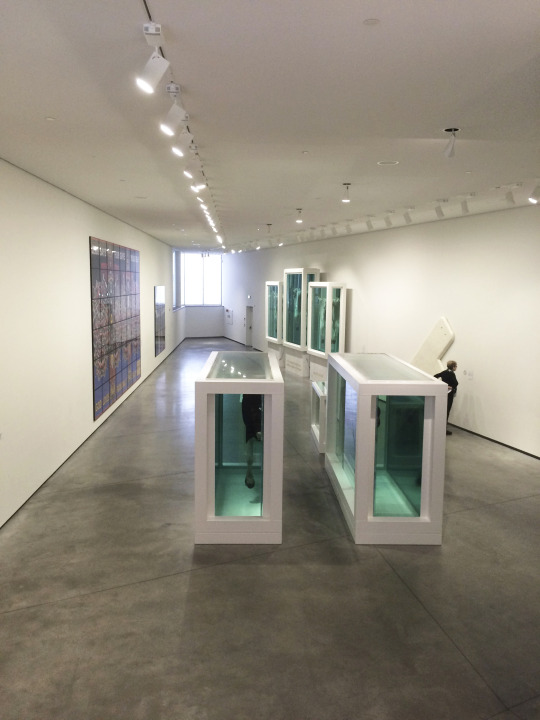


#astrup fearnley#damien hirst#david hockney#oslo#norway#museumseries#contemporary art#modern art#travel
2 notes
·
View notes
Text
Bergen - Bryggen and Fløyen Mountain

1,50 euro hotdog was the highlight of a local newstand Narvesen.
And it was really good for 1,50! It’s like Ikea’s hotdog, and then my friend told me Scandinavian countries are famous for their hotdogs. That makes a lot of sense.

Bryggen. The most historic and happening part of the city, dating back to 1070s, was made a UNESCO World Heritage Site in 1979. The rest of the city was really quiet when we walked from our airbnb to downtown so we were really surprised that there’s such a crowd here. Probably because of the cycling competition that was going on in downtown. We were wondering if this small city is as crowded on a normal Saturday?



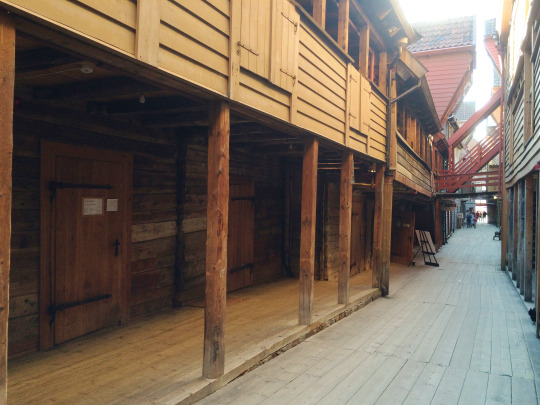

The centuries old buildings really look like they came right out of a storybook and there are some shops selling locally made handicrafts and leather and fur bags and stuff.
And then we went hiking on the Fløyen Mountain which is just beside the city and is the highest point in the city. Bergen is basically surrounded by mountains on three sides and the sea to its west, with Fløyen on its north.
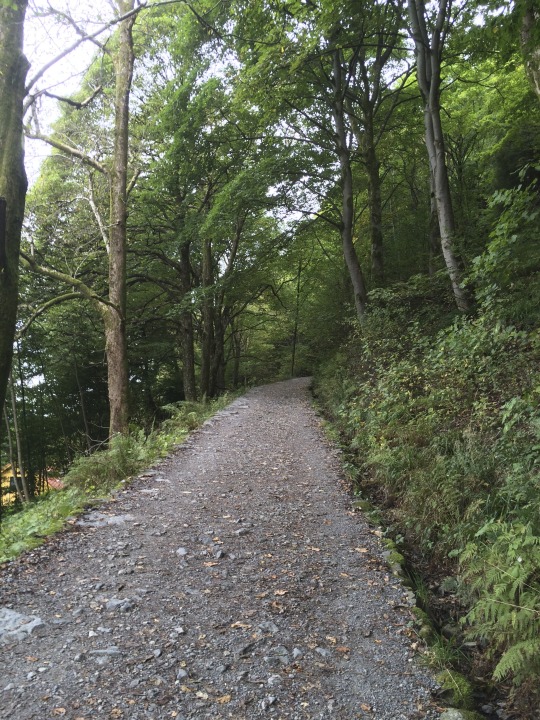
Walking in the Scandinavian forest, the two things that came to mind are Kanken bags, and indie folk music. Maybe because all the indie folk music albums feature winterly, northernly temperate coniferous forests.
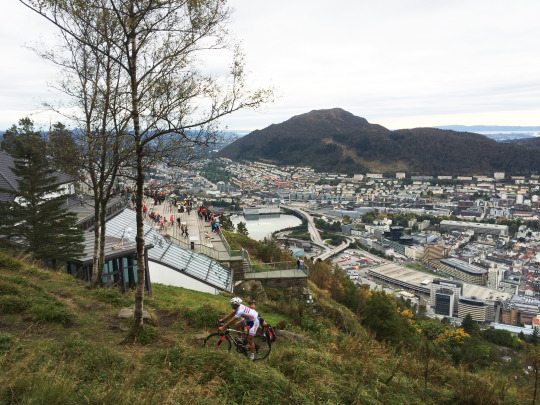

View from the top of Mount Fløyen. There’s also a nice viewing point with some cafes and shops. We got ice cream despite the cold and the wind, and witnessed the most interesting way of adding topping to ice cream. I should have taken photo but I wasn’t quick enough for the ice cream man’s dexterity. But this was the result:
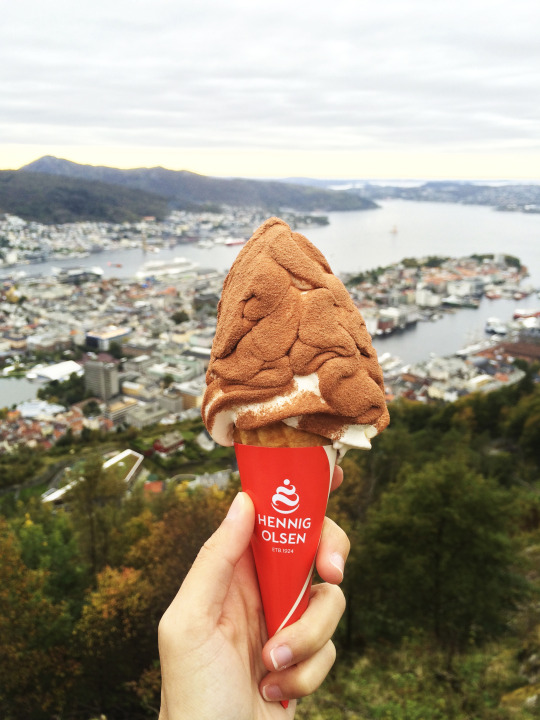
What he did was first make a perfect ice cream cone, then slapped the whole ice cream flat into a tray of chocolate powder. We were stunned. Probably only because the ice cream could remain solid enough in the low temperature to be slapped around like this. But even though it’s the ugliest ice cream I’ve ever had, the mouthfeel was very interesting, with sand-like chocolate powder amidst the rich, cold, and smooth ice cream, almost like the pop rocks candy bursting in your mouth.
0 notes
Text
Norway In a Nutshell
In a nutshell, I really owe this trip to my friend, Yumo. She did a really great job of planning our itinerary and found us this Norway In a Nutshell trip, which takes visitors from Oslo to Bergen via one of the most scenic railway, cruise and bus routes in the world.

Part 1: Train from Oslo to Myrdal.
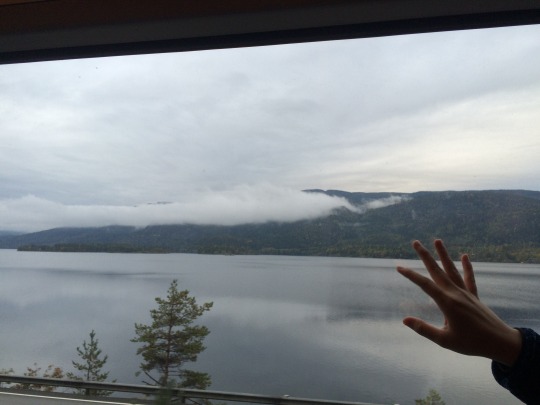
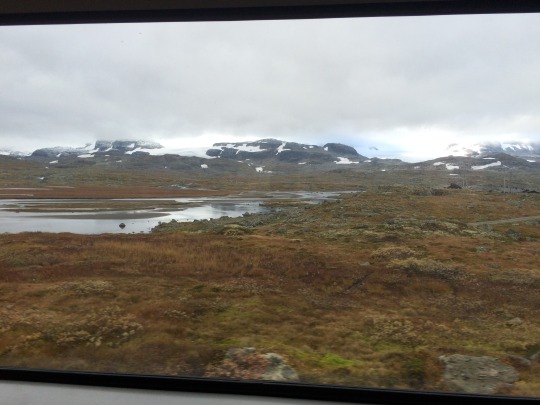
The scenery gets better the further away we were from the city. And there were little towns and cottages along the way, against snowcapped mountains and low lying clouds.

The train makes stops along the way, and one of them was Finse. A few minutes before reaching the station the captain would make an announcement and this is when everyone would start putting on their jackets and getting their cameras ready because the train only stops for a few minutes before everyone has to rush onboard again.
Part 2: Scenic railway from Myrdal to Flåm. Also known as the Flåm Railway.

Everyone on the Norway In a Nutshell tour would alight the train at Myrdal and transfer to the Flåm Railway. Even their train stations are so scenic!

The train also makes stops at certain places, like the Kjosfossen waterfall below. I was telling my friend that this is the biggest waterfall I’ve seen in my life and she told me to see the Niagara back in America. But this waterfall really has so much energy and water and sound and water vapor it just felt great standing there and getting partially drenched.


View from the train. Looks like it came right out of a landscape painting!

Flåm is a little town, more like a big visitor center and there are chalets, parks and some cafes and souvenir stores.


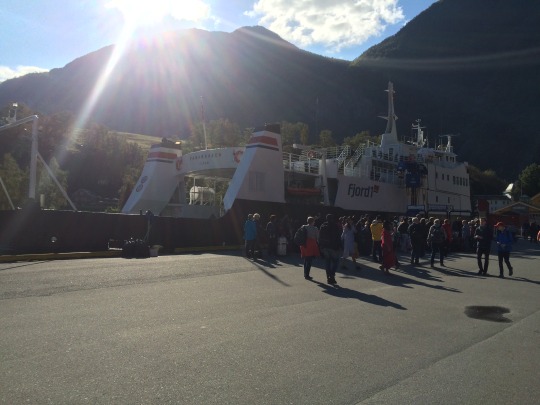
Boarding the cruise at Flåm.
Part 3: Scenic cruise from Flåm to Gudvangen.

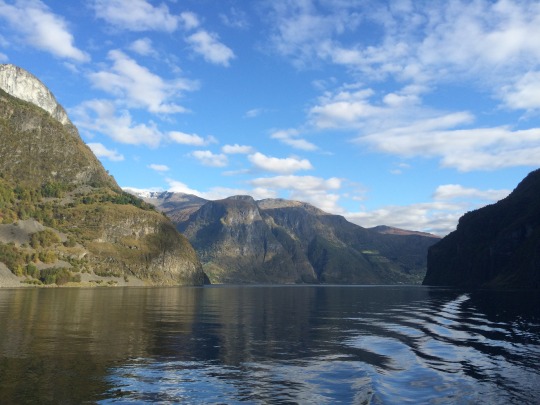
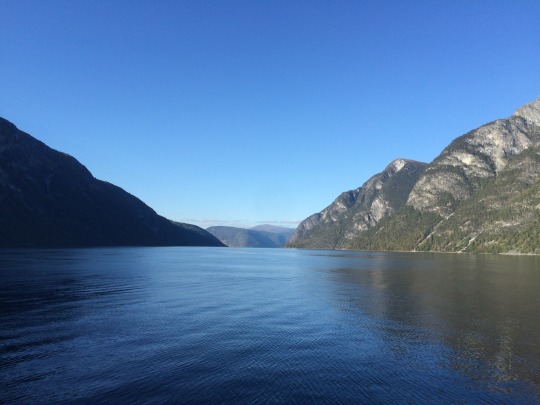

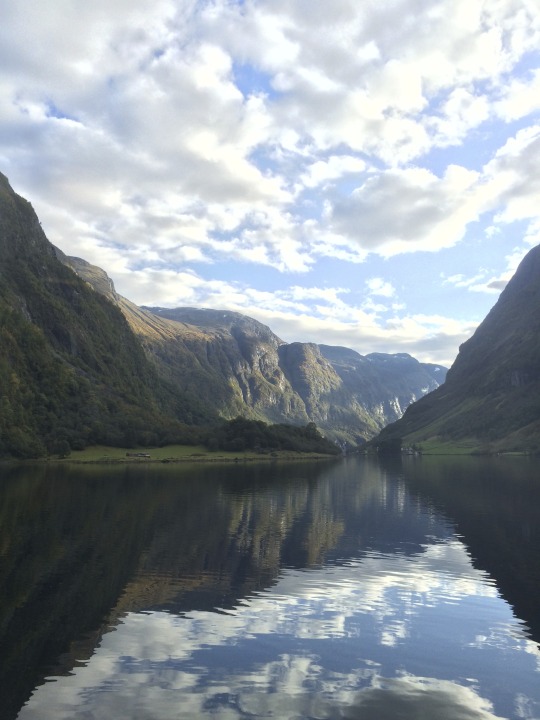

This is Gudvangen. We get off the cruise here and wait for the bus to Voss.
Part 4: Bus from Gudvangen to Voss.
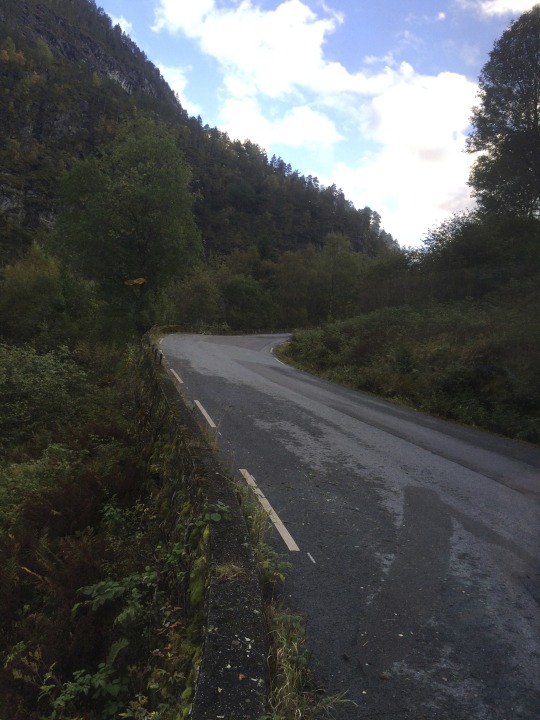
The bus goes on one of the steepest roads in Europe! Stalheimskleiva has 13 hairpin turns, all on a 30 degree slope. It was scary just looking out the window as the bus makes a turn.
Part 5: Train from Voss to Bergen.
This was another NSB train and the sun was setting by the time we got on so we didn’t take many photos. (Another reason to bring a professional camera for travelling next time.) But here we are at Bergen station!

Next post will be on our two days in Bergen!
#norwayinanutshell#norway#bergen#oslo#flåm#myrdal#gudvangen#voss#fjord#aurlandsfjord#nærøyfjord#stalheimskleiva#kjosfossen
0 notes
Text
All we did in Bangkok was eat
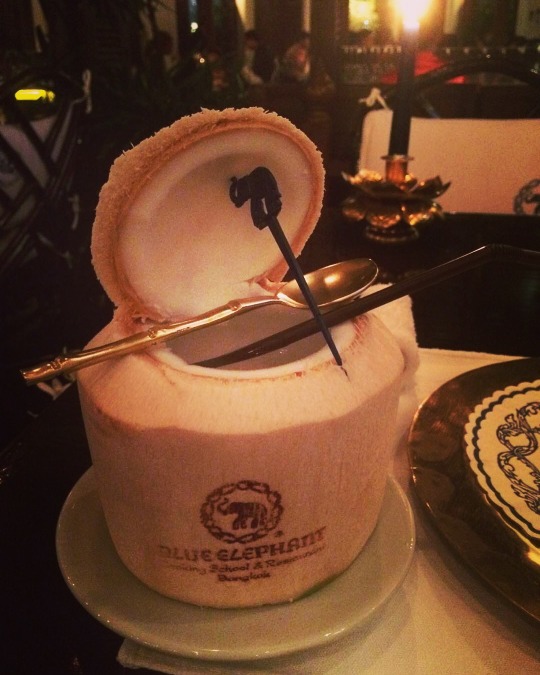
The Blue Elephant restaurant serves Thai cuisine and also has its own culinary school in the building.
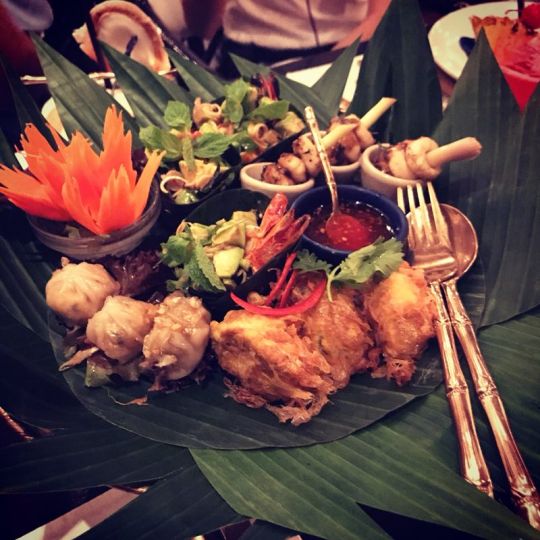
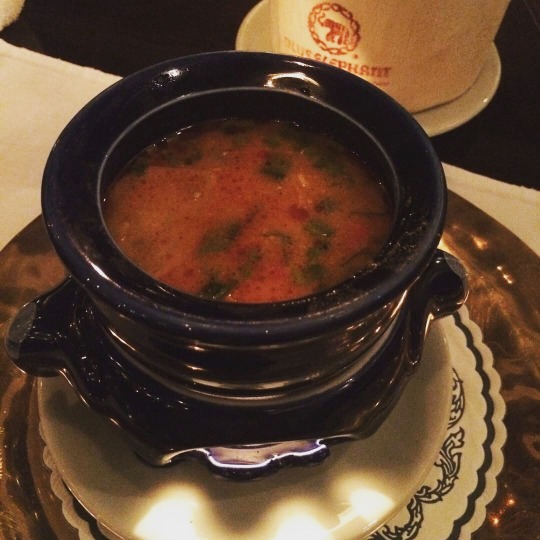
The photo is a little dark, but that is Tom Yum soup. Honestly, I can never have enough good Tom Yum. It’s probably my favorite Thai dish.
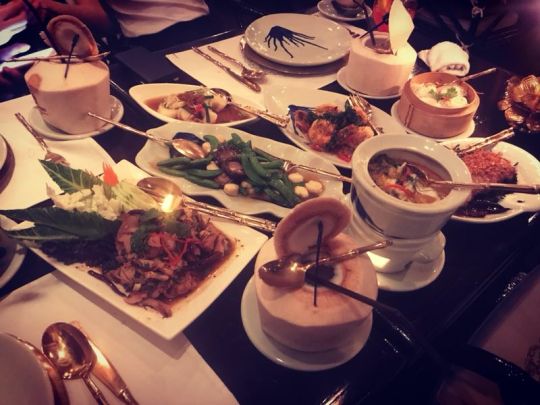
Main dishes.
And there is an Allcoco cafe near our Airbnb, which we walked past everyday but only on the last two days did it occur to me that I should try it out. And it also has very attractive interior design which makes you want to stay in their cafe for the entire afternoon. They sell whole coconuts, coconut “snowballs” which are whole coconuts with husks removed, coconut ice cream, coconut pudding and a whole variety of coconut drinks from coconut flavored coffee to coconut Thai iced tea with ice cream. I think tropical places really need more of such cafes.
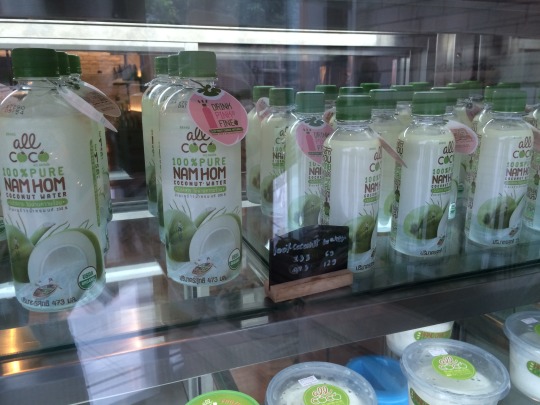
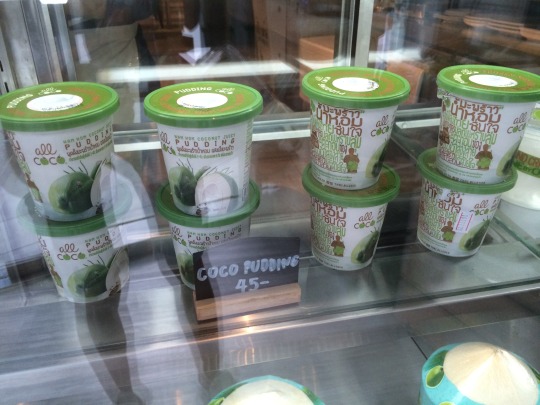



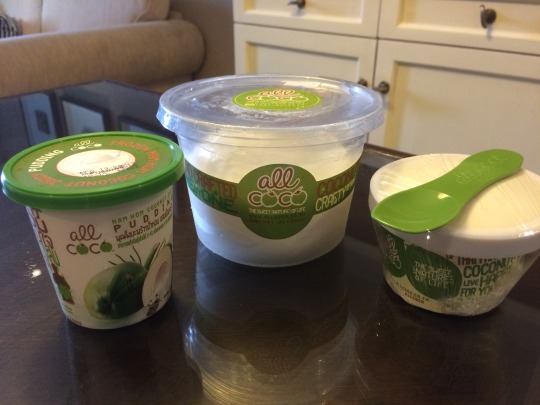
Coconut pudding, coconut “snowball” and coconut ice cream.

This black coconut ice cream is made from burnt coconut husks. It tastes great too!

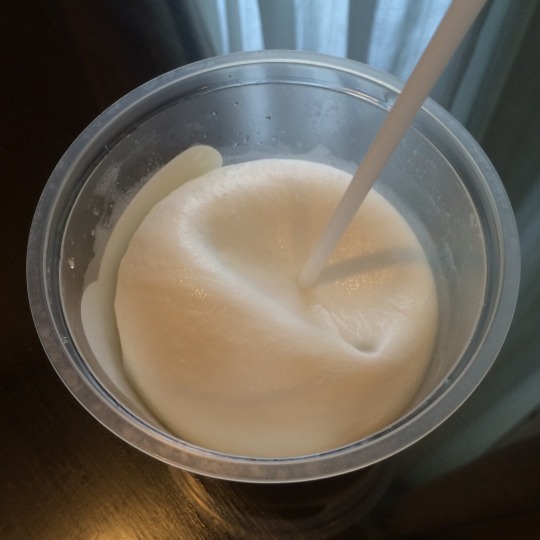
First, you drink the water from a straw...

Then... challenge yourself to come up with the most creative half-coconut shape that can contain water. I was working on it.
But yeah, this coconut-eating experience has given me so much inspiration. That I want to open my own coconut cafe. I think that would really put my interior design skills to some good use...
And finally, we went to this tourist food street called Khaosan Road.

Spicy rice noodle.
0 notes
Text
Museum Series: National Gallery London
Some details from Canaletto’s paintings of Venice:
One thing that struck me was how old these Venetian buildings were even back in the 18th century. Canaletto’s faithful depiction of details reveals that already in the 1700s, the plasters were peeling and walls cracking. And rather than looking unsightly, the way he depicted those details makes them a real cherry on the cake, adding so much life to the picture.
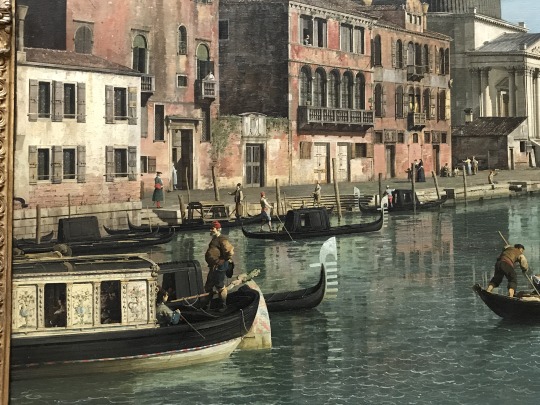


Museum interiors. I took these photos to get a sense of the museum display. Dark colored walls are usually used in galleries with a classical architecture, like the National Gallery and the Louvre, as opposed to the white cube museum, where the walls are mostly just white.

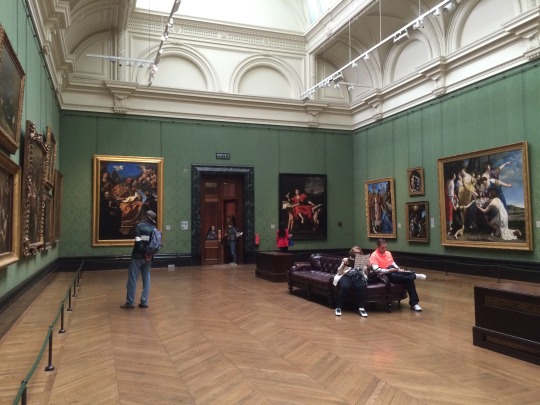


1 note
·
View note
